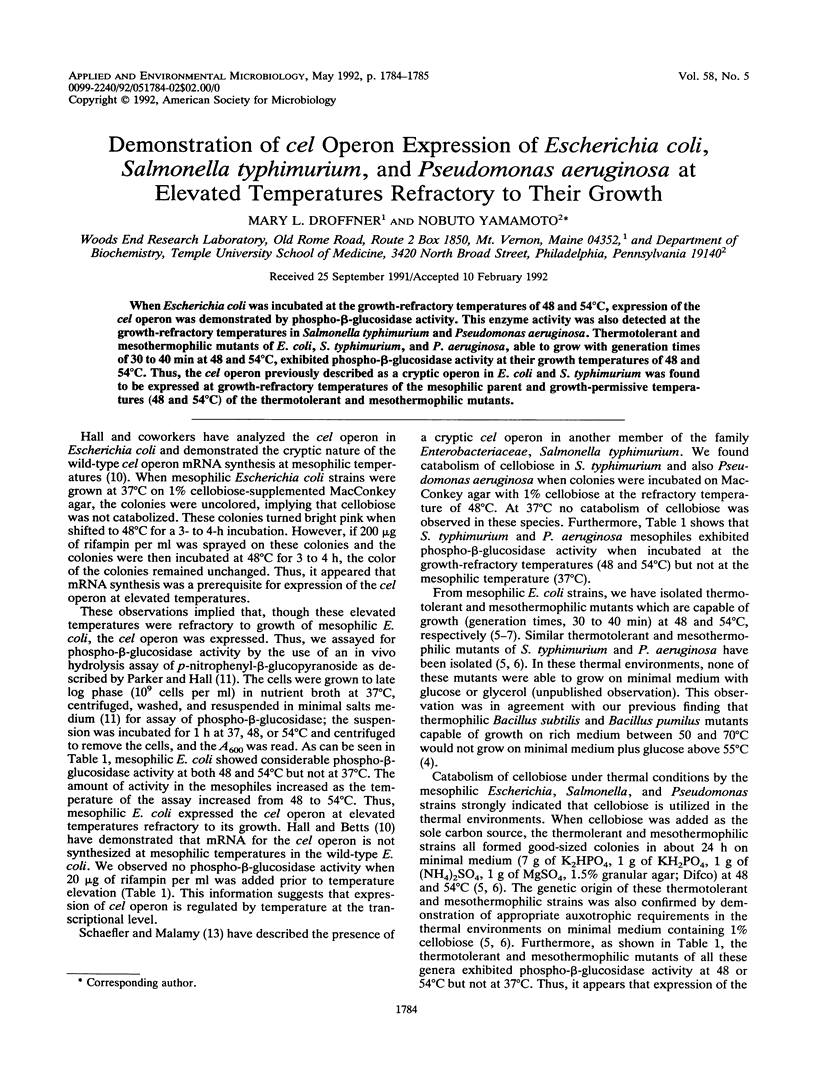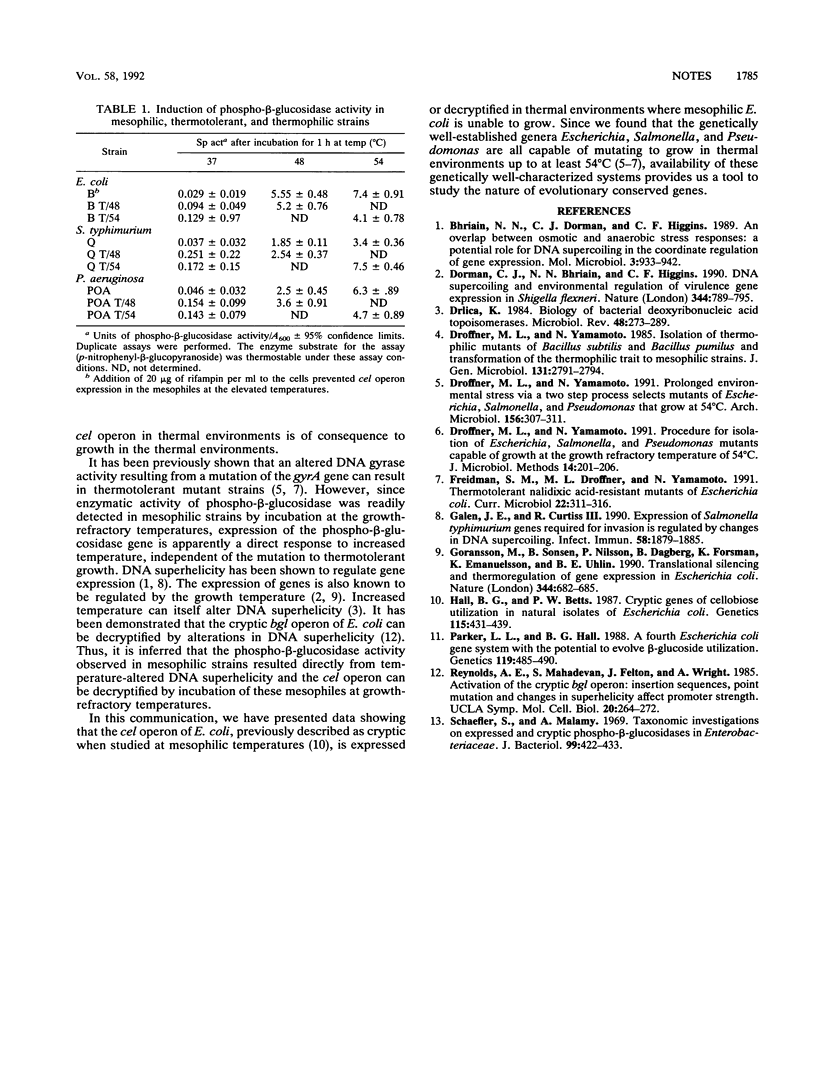Abstract
When Escherichia coli was incubated at the growth-refractory temperatures of 48 and 54 degrees C, expression of the cel operon was demonstrated by phospho-beta-glucosidase activity. This enzyme activity was also detected at the growth-refractory temperatures in Salmonella typhimurium and Pseudomonas aeruginosa. Thermotolerant and mesothermophilic mutants of E. coli, S. typhimurium, and P. aeruginosa, able to grow with generation times of 30 to 40 min at 48 and 54 degrees C, exhibited phospho-beta-glucosidase activity at their growth temperatures of 48 and 54 degrees C. Thus, the cel operon previously described as a cryptic operon in E. coli and S. typhimurium was found to be expressed at growth-refractory temperatures of the mesophilic parent and growth-permissive temperatures (48 and 54 degrees C) of the thermotolerant and mesothermophilic mutants.
Full text
PDF

Selected References
These references are in PubMed. This may not be the complete list of references from this article.
- Dorman C. J., Ni Bhriain N., Higgins C. F. DNA supercoiling and environmental regulation of virulence gene expression in Shigella flexneri. Nature. 1990 Apr 19;344(6268):789–792. doi: 10.1038/344789a0. [DOI] [PubMed] [Google Scholar]
- Drlica K. Biology of bacterial deoxyribonucleic acid topoisomerases. Microbiol Rev. 1984 Dec;48(4):273–289. doi: 10.1128/mr.48.4.273-289.1984. [DOI] [PMC free article] [PubMed] [Google Scholar]
- Droffner M. L., Yamamoto N. Isolation of thermophilic mutants of Bacillus subtilis and Bacillus pumilus and transformation of the thermophilic trait to mesophilic strains. J Gen Microbiol. 1985 Oct;131(10):2789–2794. doi: 10.1099/00221287-131-10-2789. [DOI] [PubMed] [Google Scholar]
- Droffner M. L., Yamamoto N. Prolonged environmental stress via a two step process selects mutants of Escherichia, Salmonella and Pseudomonas that grow at 54 degrees C. Arch Microbiol. 1991;156(4):307–311. doi: 10.1007/BF00263003. [DOI] [PubMed] [Google Scholar]
- Galán J. E., Curtiss R., 3rd Expression of Salmonella typhimurium genes required for invasion is regulated by changes in DNA supercoiling. Infect Immun. 1990 Jun;58(6):1879–1885. doi: 10.1128/iai.58.6.1879-1885.1990. [DOI] [PMC free article] [PubMed] [Google Scholar]
- Göransson M., Sondén B., Nilsson P., Dagberg B., Forsman K., Emanuelsson K., Uhlin B. E. Transcriptional silencing and thermoregulation of gene expression in Escherichia coli. Nature. 1990 Apr 12;344(6267):682–685. doi: 10.1038/344682a0. [DOI] [PubMed] [Google Scholar]
- Hall B. G., Betts P. W. Cryptic genes for cellobiose utilization in natural isolates of Escherichia coli. Genetics. 1987 Mar;115(3):431–439. doi: 10.1093/genetics/115.3.431. [DOI] [PMC free article] [PubMed] [Google Scholar]
- Ni Bhriain N., Dorman C. J., Higgins C. F. An overlap between osmotic and anaerobic stress responses: a potential role for DNA supercoiling in the coordinate regulation of gene expression. Mol Microbiol. 1989 Jul;3(7):933–942. doi: 10.1111/j.1365-2958.1989.tb00243.x. [DOI] [PubMed] [Google Scholar]
- Parker L. L., Hall B. G. A fourth Escherichia coli gene system with the potential to evolve beta-glucoside utilization. Genetics. 1988 Jul;119(3):485–490. doi: 10.1093/genetics/119.3.485. [DOI] [PMC free article] [PubMed] [Google Scholar]
- Schaefler S., Malamy A. Taxonomic investigations on expressed and cryptic phospho-beta-glucosidases in Enterobacteriaceae. J Bacteriol. 1969 Aug;99(2):422–433. doi: 10.1128/jb.99.2.422-433.1969. [DOI] [PMC free article] [PubMed] [Google Scholar]


